Looking at the wall of milk alternative tetra bricks brings confusion, doubt, and a certain level of uneasiness. Do I get the brand that’s on sale this week? I wonder if this almond milk contains any actual almonds? And the essential question: Should I just make my own?
To find out once and for all which nondairy milks are worth purchasing — and which are better made yourself — I went to my local market and bought one of every type of milk they had: soy, cashew, almond, oat, hemp, rice, and coconut — all in the original, unsweetened flavor.
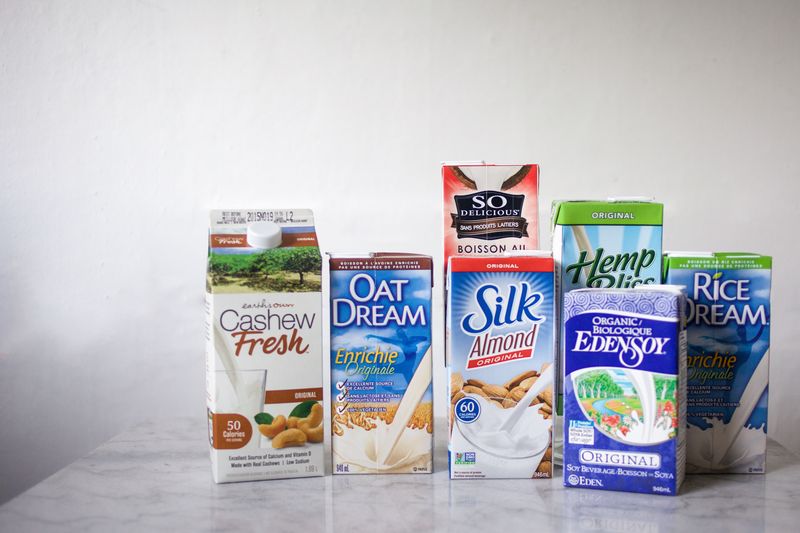
Food52 / Sophie MacKenzie
I also made my own versions of all these to pit store-bought against homemade in terms of taste, ease of making, cost, and how well they held up in a hot beverage.
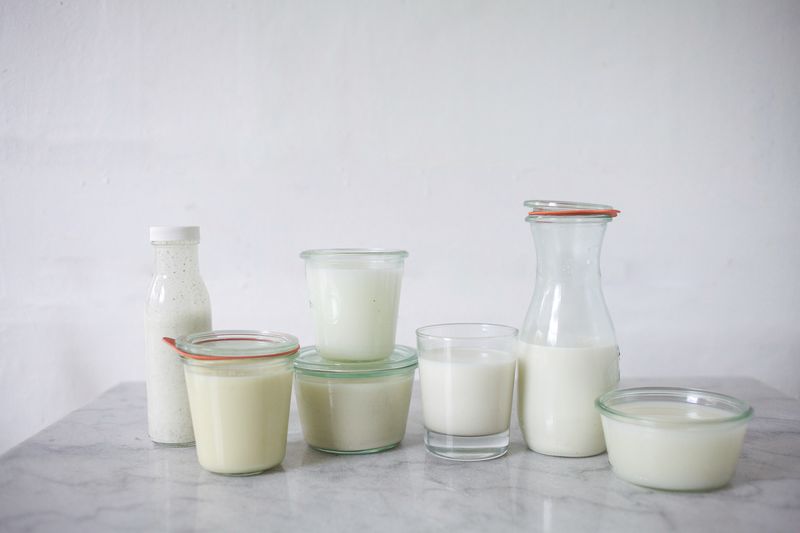
Food52 / Sophie MacKenzie
Rice milk
How to make it: Cook and cool 1/2 cup raw brown rice. Purée cooked rice along with two cups water until smooth. Pass the mixture through a cheesecloth or nut milk bag. Season milk with a pinch of sea salt and liquid sweetener to taste.
Ease of making: Medium
Taste
Homemade: At first glance, the rice milk appeared light and watery, but upon tasting it, I realized that it was super creamy on the tongue with a nice earthy taste. The flavor was distinctly rice — similar to the Japanese fermented rice drink amazake.
Store-bought: While much thinner than the homemade version, it didn’t have any “rice” flavor that could muddy the flavor of your drink or dish. It did, however, have a slightly odd aftertaste that I didn’t find overly appetizing.
Holding up to heat: Neither milk separated nor curdled when added to tea.
Cost: While the average price of rice milk is $3 to $4 per carton, a cup of rice is under $1, making homemade milk much more cost effective. (Leftover rice can even be used to make nut milk!) And speaking of food waste, the leftover rice pulp from making the milk can be cooked as cream of rice, or baked into muffins, pancakes, or breads. Win win.

Food52 / Sophie MacKenzie
Hemp milk
How to make it: Purée one cup raw hulled hemp seeds with two cups water until smooth. Pass the mixture through a cheesecloth or nut milk bag (not much pulp will come out). Season milk with a pinch of sea salt and liquid sweetener to taste.
Ease of making: Simple
Taste
Homemade: The hemp milk appeared speckled and gritty. The consistency was chalky and the flavor was strong and earthy, with a bitter aftertaste.
Store-bought: With a smoother consistency and less chalky feeling, the purchased milk was also less earthy and bitter in taste.
Holding up to heat: Neither separated nor curdled when added to tea.
Cost: The hemp milk was $4, which, with the high cost of hemp seeds, was pretty much on par with making it yourself.

Food52 / Sophie MacKenzie
Almond milk
How to make it: Soak one cup raw almonds overnight, then drain. Purée almonds with 3 1/2 cups fresh water until smooth. Pass the mixture through a cheesecloth or nut milk bag. Season milk with a pinch of sea salt and liquid sweetener to taste.
Ease of making: Simple
Taste
Homemade: The homemade almond milk had the appearance of skim milk. It was smooth and sweet with a subtle nuttiness.
Store-bought: Unlike the homemade almond milk, the store-bought variety tasted very heavily of nutty almond flavor — and unfortunately a little like almond extract. It was smooth and creamy, but the flavor was definitely overpowering.
Holding up to heat: Neither milk separated when added to a hot beverage.
Cost: While almond milk runs from $3 to $5, it would be nearly double to make your own. However, there will be a much higher content of almonds in a homemade variety. Leftover almond pulp can be used immediately in baking, frozen for a later use, or toasted and used as almond flour.
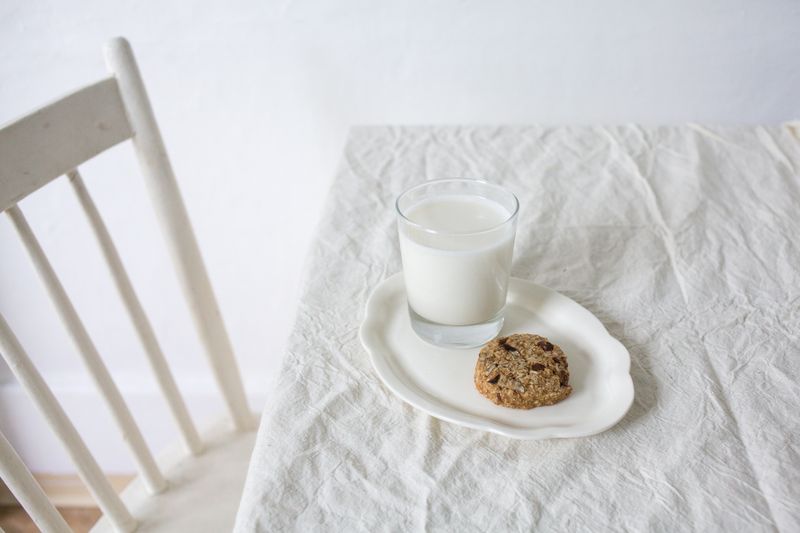
Food52 / Sophie MacKenzie
Cashew milk
How to make it: Soak 3/4 cup cashews overnight, then drain. Purée cashews along with two cups fresh water until smooth. Do not strain through cheesecloth or a milk bag. Season milk with a pinch of sea salt and liquid sweetener to taste.
Ease of making: Simple
Taste
Homemade: Because the nuts are not removed after puréeing, the cashew milk remains nice and creamy, with a slight nutty flavor. It can be a little gritty at times, but this can be solved with extra puréeing.
Store-bought: The consistency of the store-bought version was much smoother and thinner, but the flavor was that of over-roasted nuts.
Holding up to heat: Both worked well in hot beverages.
Cost: While the cashew milk was about $4 to $5, the cost of cashews needed for a batch would be far more.
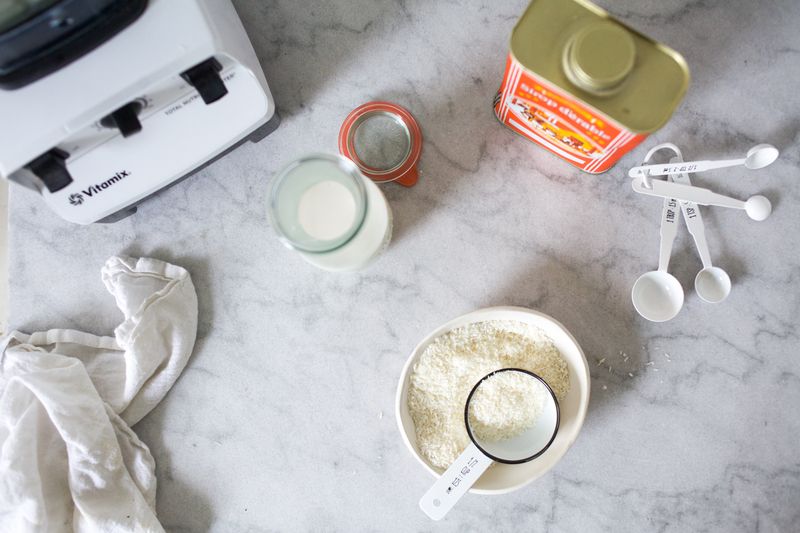
Food52 / Sophie MacKenzie
Coconut milk
How to make it: Purée one cup dried unsweetened coconut with four cups water until smooth. Pass the mixture through a cheesecloth or nut milk bag. Season milk with a pinch of sea salt and liquid sweetener to taste.
Ease of making: Simple
Taste
Homemade: While the bluish tinge of the coconut milk made it look watery, the natural sweetness of the coconut made for a sweet and delightful coconut flavor.
Store-bought: While this version was more creamy, it lacked any coconut flavor and was slightly chemical tasting.
Holding up to heat: The homemade coconut milk worked well in the tea, but the purchased one was the only variety of milk alternative that curdled.
Cost: Again, the coconut milk was $3 to $4. To make an equivalent amount with coconut would run you half of that, plus the remaining pulp can be saved for baking or toasting.

Food52 / Sophie MacKenzie
Oat milk
How to make it: Soak one cup steel-cut oats overnight, then drain them. Purée along with three cups fresh water until smooth. Pass the mixture through a cheesecloth or nut milk bag. Season milk with a pinch of sea salt and liquid sweetener to taste.
Ease of making: Simple
Taste
Homemade: Out of all the homemade milks, the oat looked the most like dairy. It was earthy, nutty, and mild in flavor.
Store-bought: The purchased version tasted nearly the same as the homemade one, with ever-so-slightly less oat taste.
Holding up to heat: Both were great in hot drinks.
Cost: Again, the bought version costs about $3 to $4 while the homemade is much cheaper, and again the pulp can be saved and cooked.
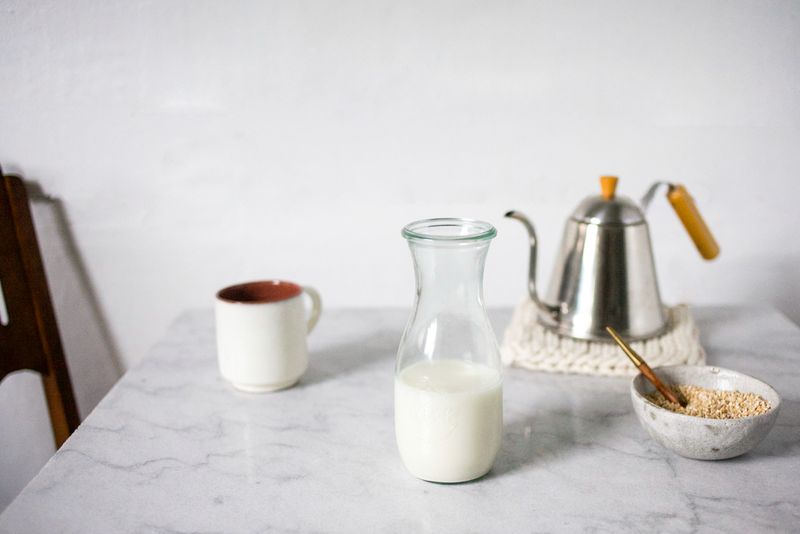
Food52 / Sophie MacKenzie
Soy milk
How to make it: Soak one cup dried soy beans overnight. The next day, drain and rub the beans together to remove the casing (the beans will split into halves). Purée along with four cups water until smooth. Pass the mixture through a cheesecloth or nut milk bag. The remaining pulp can be composted. Bring the milk to a boil and simmer for 25 minutes, stirring often. Let cool, then season milk with a pinch of sea salt and liquid sweetener to taste.
Ease of making: Difficult
Taste
Homemade: I was initially turned off by the yellow color of the milk, then when I tasted it I realized just how awful it was. It tasted like beany tofu water — not an enjoyable experience.
Store-bought: Much like my homemade version, the bought soy milk was yellow in color. However, it had less of a bean taste and more of a wheat cereal taste, which I didn’t understand until I read the label to see that wheat was added!
Holding up to heat: Both were great.
Cost: The soy milk cost about $3.50, while the soy beans only cost $1. However, prepping the soy beans was time consuming and once they were used, the pulp couldn’t be reused.
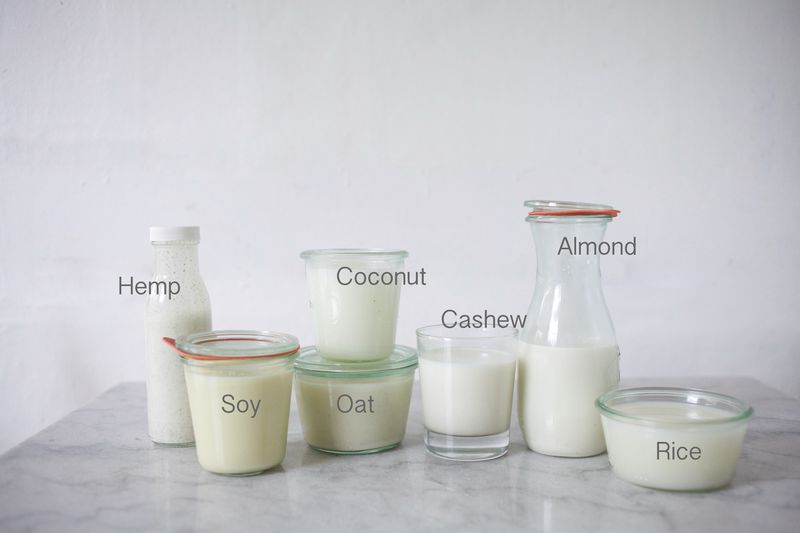
Food52 / Sophie MacKenzie
The verdict
Many of these milk alternatives are almost as easy to make as they are to buy — and at a far more economical price. While the homemade varieties will perish faster (four to five days versus seven to 10 days after opening store-bought cartons) — and some require two days to make — they are also free of many of the additives found in the store bought brands, such as oil, sulphates, calcium chloride, and thickeners (guar gum, xantham, lecithin, and carrageenan). Overall, I will make my own rice, almond, cashew, coconut, and oat milks. Yet, based on the unfavorable flavor and texture of homemade hemp milk, I will continue to buy that one. As for soy, it was very labor-intensive and tasted awful. If you enjoy soy milk, buy it, hands down.



